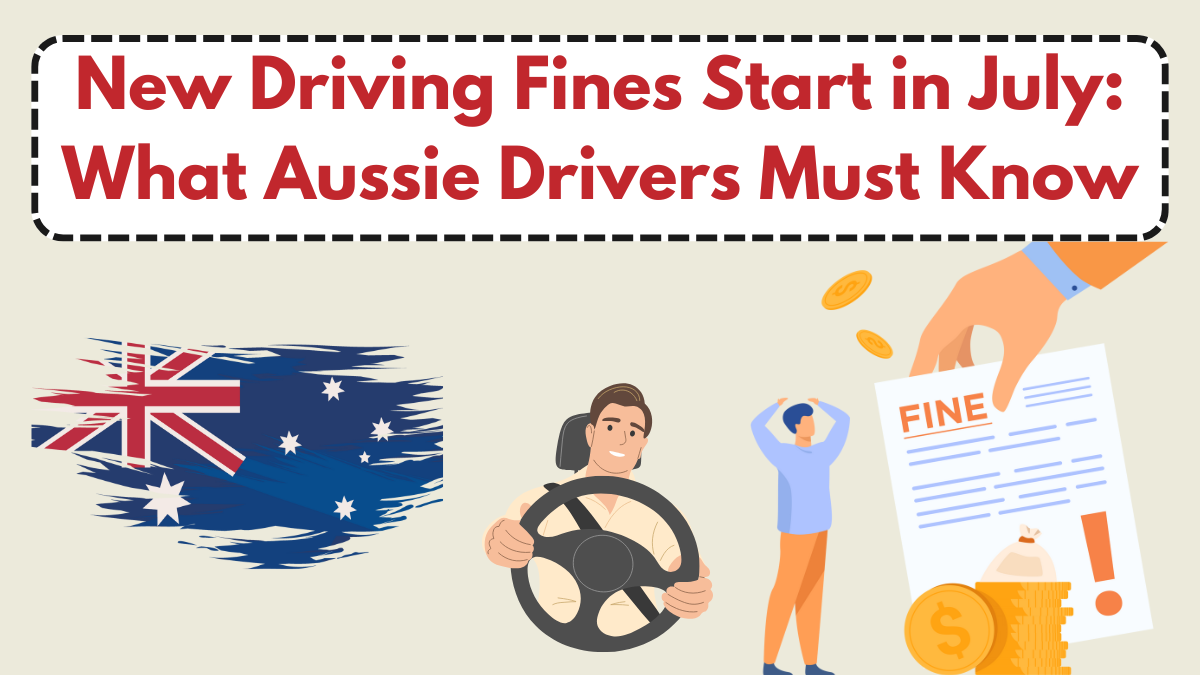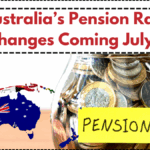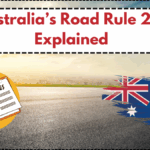Major changes to Australia’s road regulations will introduce new driving fines aimed at curbing risky behaviours and improving compliance across states and territories. These updates reflect a national push to enhance road safety and reduce traffic-related fatalities, which have seen a recent uptick.
With stricter penalties and broader enforcement measures, Aussie drivers should be fully aware of what’s changing—and what it could cost them.

Key Updates Coming in July: What’s New and Why It Matters
The July updates bring sweeping changes to the Australia road rules. Some of the most talked-about revisions include increased penalties for distracted driving, unlicensed driving, and misuse of mobile phones behind the wheel. Here’s a look at the most significant adjustments:
| Offense | Current Fine | New Fine (From July 2025) | Demerit Points |
|---|---|---|---|
| Using mobile phone while driving | $545 | $670 | 5 -> 6 |
| Speeding 10–20km/h over limit | $275 | $310 | 3 -> 4 |
| Driving without a valid licence | $531 | $700 | 5 -> 6 |
| Seatbelt non-compliance | $298 | $350 | 3 |
| Ignoring school zone limits | $409 | $520 | 4 -> 5 |
These hikes are not just about revenue—they’re part of a nationwide strategy to toughen up on non-compliance and discourage casual rule-breaking.
Why the New Driving Fines 2025 Are a Big Deal for Every Motorist
Australia’s updated penalties represent more than a bureaucratic reshuffle—they’re a message to all road users. Authorities are making it clear that complacency on the road won’t be tolerated. In particular, there’s an emphasis on mobile phone use, which continues to be a major contributor to crashes involving serious injury.
For example, a recent Victoria Transport study cited mobile phone distractions as a factor in over 20% of rear-end collisions in 2024. With fines now nearing $700 for these infractions, the cost of a quick glance at your screen just got a lot steeper.
New Enforcement Tech and State-by-State Variations
Drivers should also expect broader use of high-tech enforcement tools like AI-powered road cameras, automated number plate recognition (ANPR), and mobile phone detection systems. These tools will expand to new areas and will operate with reduced human intervention.
It’s also worth noting that while the base fine structures are being standardized, enforcement and implementation still vary by state. Queensland, for example, will trial AI dashcams in government fleet vehicles, while NSW is doubling school zone patrols during peak hours.
Staying Safe (and Fine-Free): What Aussie Drivers Can Do Now
Now’s the time to double-check your understanding of local road rules. Brush up on mobile phone usage laws, always keep your licence current, and pay attention to school zone times, which will be under closer scrutiny from July.
It’s also wise to download state transport apps that send notifications about your demerit points and licence status—keeping informed can save hundreds in driver fines and even preserve your right to drive.
Conclusion: Pay Attention or Pay the Price
With the New Driving Fines 2025 arriving this July, Australian drivers need to be more alert than ever. These updates are serious, far-reaching, and heavily enforced. Understanding and adapting to the new rules is not just a legal obligation—it’s a crucial step in protecting yourself, your passengers, and everyone else on the road.
FAQ
What are the biggest changes in the New Driving Fines 2025?
The most significant changes include higher fines for mobile phone use, unlicensed driving, and school zone speeding. Some fines have increased by over 25%.
Do all states in Australia follow the same rules?
Not exactly. While many fines are being aligned nationally, each state may introduce specific measures or use different enforcement technologies.
When do the new fines take effect?
The new driving fines take effect across Australia starting July 1, 2025.
How can I avoid these fines?
Stay updated on your local road rules, avoid distractions while driving, and ensure your licence and registration are valid at all times.
Are mobile phone detection cameras used everywhere?
They’re expanding rapidly. NSW and Victoria already have widespread use, and other states are rolling them out this year.
For More Information Click Here



